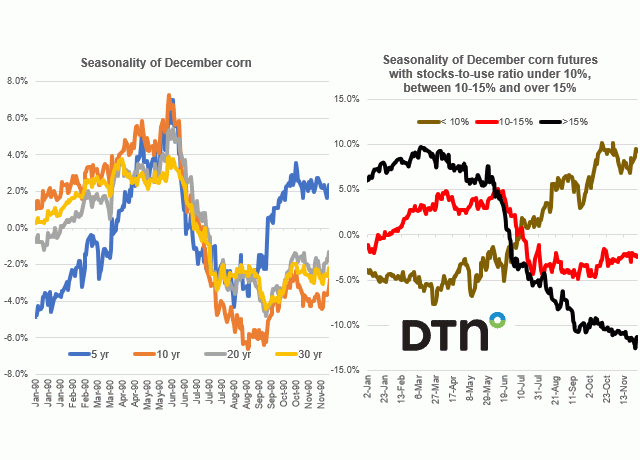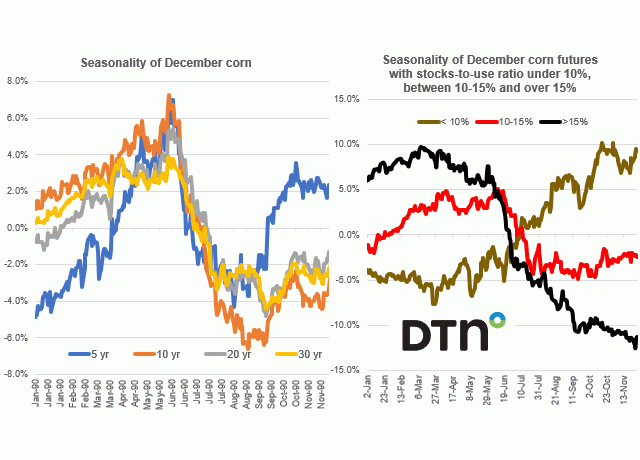Fundamentally Speaking
December Corn Seasonality Studies
For about a ten-week period, the December corn contract has been stuck in a 20-cent range for the most part between $4.80 and $5.00, save for a dip down to the $4.67 area towards the end of September when prices looked like they were going to head to the $4.50 region.
This is not the case now as last week CZ popped past stout resistance at the $5.00 level to almost $5.10, but has since given ground and moved back into the old range.
Still, a number of seasonality studies indicate that prices have bottomed out, though fundamentally, mounting any serious rally still looks to be a challenge.
P[L1] D[0x0] M[300x250] OOP[F] ADUNIT[] T[]
This chart shows the seasonality of December corn futures two ways.
First, we look at the 5, 10-, 20- and 30-year seasonality which shows that after making a seasonal high at the beginning of June, there is a clear downward trend that ends in the middle of August for the five-year trend, the end of August for the 10-year trend, and mid-September for both the 20- and 30-year trends.
Then we also track the seasonality of December corn futures for years when the stocks-to-use ratio is below 10%, those years when the stocks-to-use ratio is between 10 to 15% and then the years when the ratio is over 15%.
A stocks-to-use ratio below 10% is indicative of tight supplies so it's no surprise the seasonal low occurs much earlier in the year, at the end of March.
A stocks-to-use ratio between 10-15%, which suggests adequate but not burdensome ending stocks, shows prices bottoming around the middle of August.
Finally, a stocks-to-use ratio in excess of 15% indicates a hefty supply situation and corn futures essentially continue to push lower well into late November/early December.
This month's WASDE report pegged the 2023/24 U.S. corn stocks-to-use ratio at 14.7% which, along with the 5, 10-, 20- and 30-year seasonal studies, implies the low for this year has already been seen.
If, however, the November crop report shows ending stocks higher, either through a combination of a yield higher than the last estimate of 173.0 bushels per acre or demand is pared, most likely exports, it is possible that the December 2023 contract may still push to new lows prior to its expiry.
(c) Copyright 2023 DTN, LLC. All rights reserved.






Comments
To comment, please Log In or Join our Community .